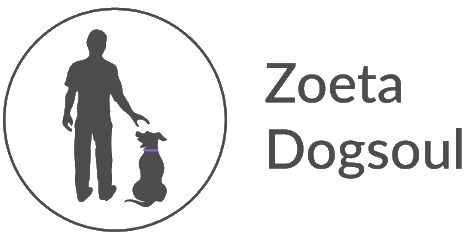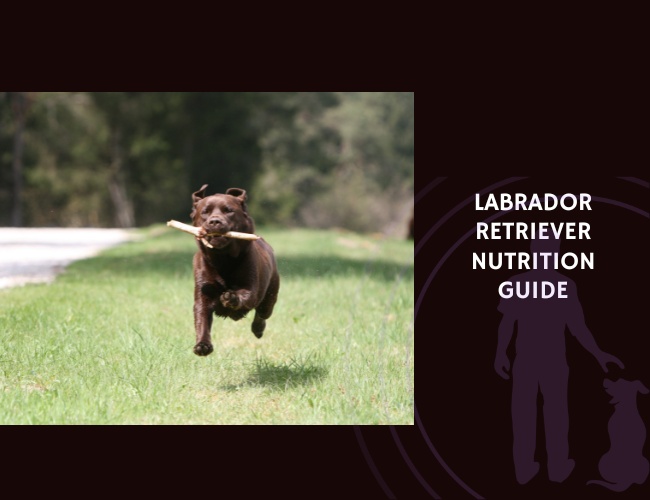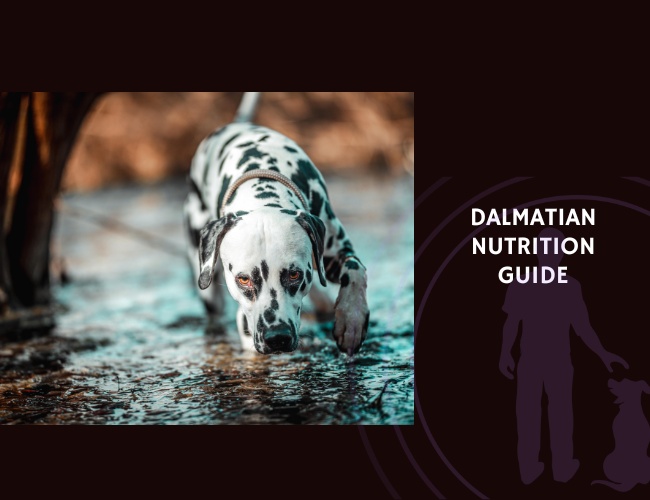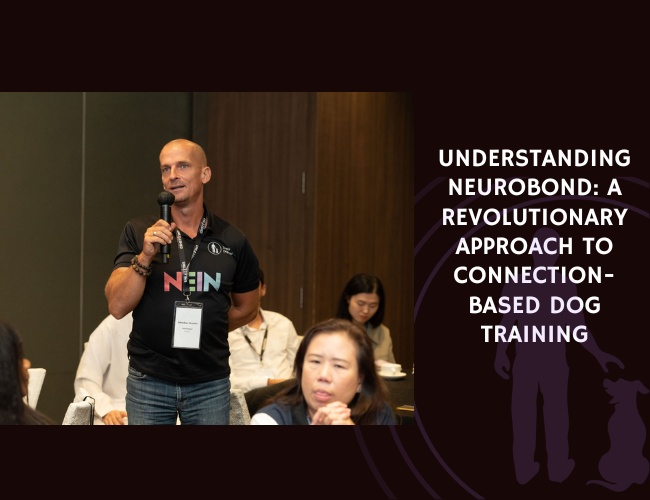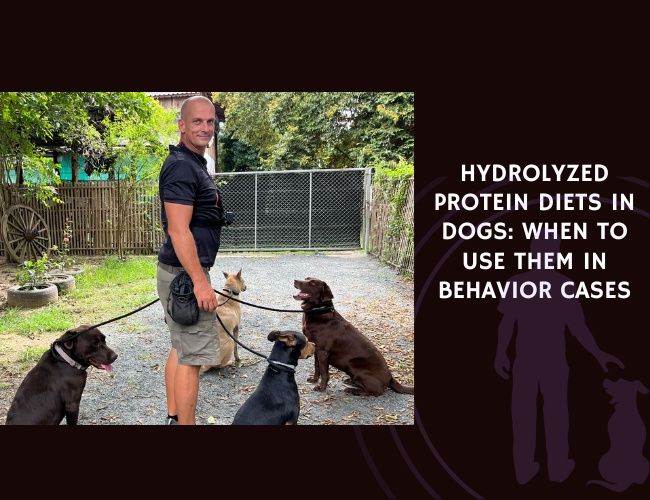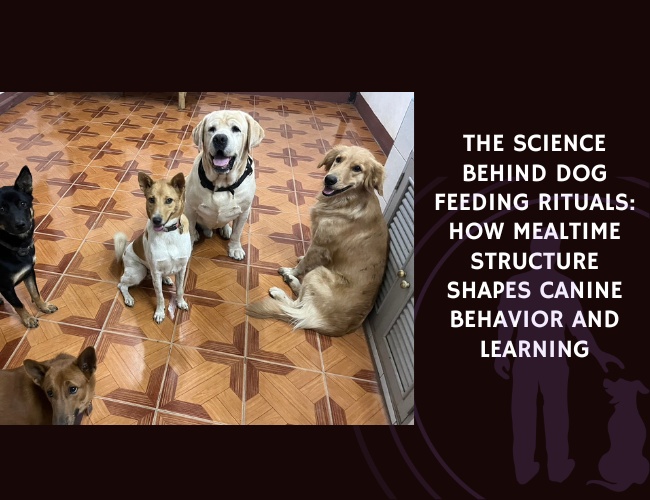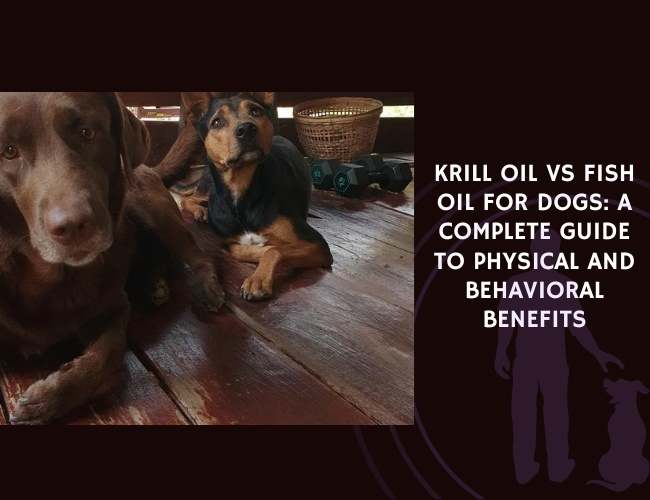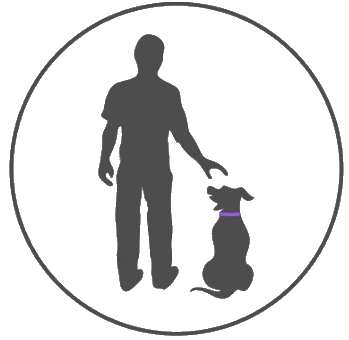Puppies need to be introduced to other animals as well as people. Puppies need to learn to be alone and relax. When you take your puppy out of solitary confinement to join the family, make sure you only take him when he is calm. Reward the behaviors you want your puppy to do. A well-behaved puppy should do well on his own as well as with the family, and is less likely to suffer from separation anxiety in the future.
How do I know if my dog’s problems are due to separation anxiety?
Separation anxiety describes dogs that are normally overly affectionate or dependent on their owners. They typically get incredibly anxious and develop stress behaviors such as vocalizing, destroying or soiling the home when separated from their owners. Most dogs with separation anxiety try to remain close to their owners, following them from room to room and rarely staying outside alone. They often exhibit anxiety as soon as their owners prepare to leave them. Many, but not all, of these dogs crave lots of physical affection as well as attention from their owners. At departures or separations, along with articulation, destruction and also elimination, they may be restless, tremble, shake, drool, refuse to eat or become quiet and withdraw. Although the behavior usually occurs every time the owner leaves, in many cases it may occur only on specific departures, such as daytime departures or when the owner leaves after returning from work. Dogs with separation anxiety are also usually quite agitated when the owner returns.
Separation anxiety can be prevented by making sure puppies have specific times when they can be alone in their home, on the flooring or in bed. Some dogs seem to have separation anxiety, but are afraid to be home alone because something bad happened to them while they were alone (e.g., tornadoes, fireworks). Dogs that suffer from both separation anxiety and noise or storm anxiety will certainly need therapy for both problems.
Are there other factors that may cause my dog to exhibit these behaviors?
Dogs who suffer from separation anxiety get loud, become destructive, or start to break loose when their owners are preparing to leave or shortly after separation. The destructive activities are often focused on the owner’s possessions or on the doors where the owners are leaving or where the dog is confined, and usually occur shortly after separation. Vocalization occurs out of exasperation and may also consist of growling or grumbling. If the dog is causing damage, becoming noisy, or wandering off both on the way to the house and in the owner’s absence, other reasons should be considered first. Dogs that get loose when owners are home may not be fully housebroken or may have a clinical problem. If the havoc, elimination, and vocalization are more likely the longer the owners are away from home, it could be that they have been away from home too long. Barking when owners are away could be due to the sounds of strange people or other pets in the home. Some dogs try to escape or are exceptionally distressed when confined. Destructiveness or soiling of the house when a dog is confined in a dog crate, basement, or laundry room could be due to fear of being caught or obstructed, as well as related escape attempts.
” … Make a film recording
of the behavior when the dog is alone.”
These dogs need to be examined to determine if they behave the same way when confined while the owner is home. In other scenarios, fear or anxiety due to an outside event (buildings, tornadoes, fireworks) can trigger harmful behaviors. Older dogs with clinical problems such as hearing or vision loss, distressing medical conditions, as well as cognitive disorders may be much more anxious overall and seek the owner’s interest for safety and relief. Perhaps the most effective way to determine if the behavior is due to the owner’s fear of departure is to make an audio or film recording of the behavior when the dog is alone.
Where should I start?
Before you begin training, make sure your dog has an enriched environment and a predictable daily routine (see Enrichment, Predictability, and Scheduling Your Dog’s Training). In addition, all incentives need to be specified to ensure they are only offered for the behaviors you want to train and not to attract attention or to obey. Simply put, you need to use rewards in such a way that your dog learns independent behaviors and stays relaxed away from you (see Using Predictable Rewards to Train Your Dog). Unless you can get your dog to clean up and relax while you are home, he is unlikely to disengage when you leave.
The measures you need to adhere to are:
- create a predictable routine.
Since your dog is anxious, you need to start making his day calmer and more predictable, whether you are at home or out and about. Develop a daily routine so your dog can anticipate when to expect interest (including exercise, feeding, training, play, and distance) and when to expect inattention (when he needs to nap or play with his favorite toys). Try to schedule these times for playing with objects and napping at times when you would normally leave.
- Environmental enrichment – satisfying your dog’s needs.
Be sure to meet all of your dog’s needs for social contact, play, exercise, training and also elimination during the time you are with him. You should initiate regular interactive sessions and provide sufficient play and attention so that your dog is ready to settle down and sit back after each session. Now you can offer brand-new exploration and chew toys to ensure your dog has new and motivating toys to focus on when it’s time to clean up. Feeding toys can additionally replace the typical food bowls to make feeding time an even greater mental and physical effort.
3.Develop a predictable protocol for incentives.
If your dog suffers from separation anxiety, it is very likely that your dog’s favorite incentives are the attention and play you provide. Treats, food, play and chew toys may additionally be highly preferred.
” What behavior does my dog need to learn and what behavior
Should I never reinforce?”
Take each of your dog’s most valuable advantages and ask yourself, “What behavior does my dog need to learn?” and also “What behavior should I never reinforce?” For separation anxiety, you need to encourage your dog to calm down, sit back, and display a certain amount of independence, while interest-directed and pursuing behaviors should never be reinforced. For this reason, training must focus on extended and relaxed lying down and going to a bed or mat on command (see Training Calm – Clean Up and Recreational Training). If your dog wants to focus, you will need to either completely overlook him until he is winded down, or have him do a down-stay or go to his mat. If he’s in the down-stay or on the flooring long enough, give him attention or love as an incentive. Gradually design longer and longer periods of inattention before giving him attention. The goal is not to neglect the dog, but to suppress his attention-seeking behavior. You want your dog to learn that calm and quiet behavior is the only way to get interest.
- Train “determination”.
The goal of training is for your dog to learn to calm down when given a cue. Focus on getting your dog to settle down or push his bed or flooring before you give any kind of attention. Not only should you ignore attention-seeking behavior, but you should also discourage any casual communication in the first few weeks to ensure that both you and your dog are clear that a sitting position provides incentives and attention seeking does not. Practice laying down and mate training using food stimuli, remote control training, or head halter training, whichever is most reliable. Slowly develop longer periods of lying down and also longer periods on the bed or flooring before receiving attention, affection, handling or play.
- Create a place and area for relaxation.
A bed or flooring in an area where your dog can be trained to relax, nap or rest can provide a protected area where your dog can rest when you are not home. You can start by educating your dog to visit the area, and slowly design longer stays and also more feedback in the area before benefits are offered. It can be handy to have a barrier or lockable leash to make sure your dog stays in the area long enough at each session before being released. On the other hand, recognize your dog’s limitations; your dog needs to be both calm and worked out when released to prevent increased crying or barking. In the beginning, your dog can be introduced to this area with a toy or treat as a lure or with a leash and head halter as part of his training. Over time, a daily routine should be established where the dog learns to rest on his mat after each training, play, and exercise session to either nap or have fun with his own toy. Aside from play, exercise, and training, focus on giving your dog some or all of his benefits (handling, toys, chews, affection, food) only in this area. Auditory cues such as a radio or television, smells such as aromatherapy candles or a garment with the owner’s scent, and a comfortable bed can help elicit a relaxed response because they are associated with relaxation and the owner’s presence (non-absence).
- Work on responses to simple instructions.
For some dogs, it is additionally beneficial to let them learn all the points. This can be as simple as having the dog respond to the request to “sit” before he gets something he wants. For example, if your dog asks to go outside, you must allow him to “sit” before unlocking the door, and when he complies, the door is opened. This method can be used for anything the dog needs.
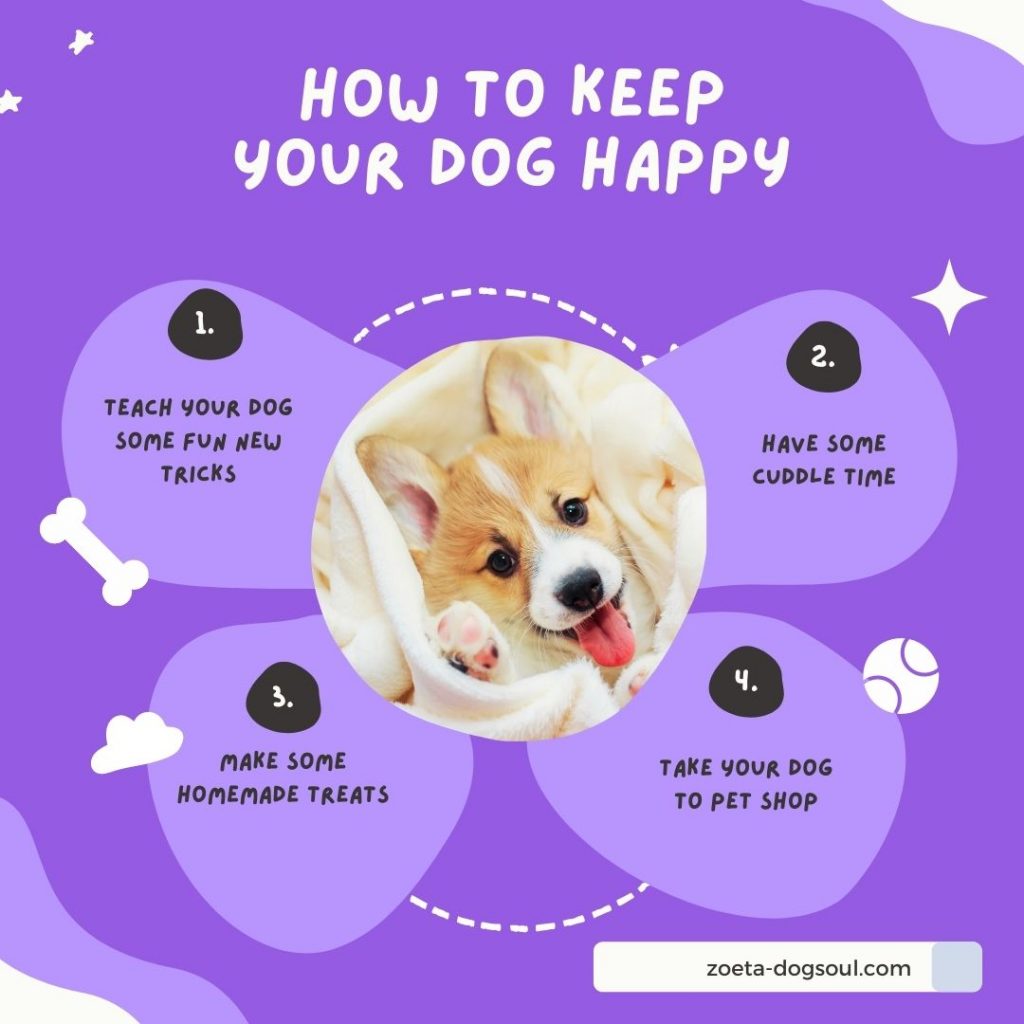
If I have to go, what can I do immediately to prevent harm?
This is a very difficult question. The goal of therapy is to minimize your dog’s level of anxiety by teaching him to be comfortable in your absence. This can be a lengthy process.
However, many owners need to address damage or vocalization immediately. During the initial retraining, it may be best to hire a dog sitter, take the dog to work with you, find a good friend to take care of the dog for a day, take care of the dog for a day, or take time off from work for the retraining period. It is important to choose a place that will not add to your dog’s anxiety. Your dog’s room or feeding area may therefore be the most practical. Traps can also be used to keep the dog away from potential problem areas. Anti-anxiety medications and pheromones can also be used temporarily for articulation until the owner can get the problem under control.
How can my dog be retrained to be less fearful during separations?
Since the real problem is anxiety, you should try to reduce all forms of anxiety before departure, during separation, and upon return. Also, your dog should learn to accept increasingly longer periods of inattention and also separation while you are home.
What should be done before separation?
Before any prolonged separation, you should give your dog an extensive play and exercise session. This not only helps to dissipate your dog’s energy and tire him out, but also provides a time of concentration. A training session can also be an effective way to continue interacting and “working” with your dog. During the last 15 to 30 minutes before separation, your dog should be left out of the loop. It is best to take your dog to a place where he can rest and relax while a radio, television or video is playing (as above). Then, you can prepare for separation while your dog is out of sight and hearing range. At this time, offer your dog a few new, encouraging toys to keep him busy and distracted during the time leading up to and during the separation. The secret is to avoid as many separation stimuli as possible to ensure your dog’s anxiety doesn’t increase before you leave. Brushing teeth, putting on work clothes, or collecting tricks, handbags, briefcases, or school books are all actions that can be done while the dog is hidden. You might also consider changing in the office, preparing and packing a lunch the night before, or even parking the car at a neighbor’s house so your dog doesn’t hear when the car pulls out of the driveway.
” Avoid saying goodbye, as this will only serve to draw attention to the separation.”
Avoid saying goodbye, as this will only serve to reinforce the separation. Another option is to give your dog as many of these cues as possible while you are still at home so that he stops expecting you to leave.
What should I do if I come home and find a mess?
If your dog has been fearful during your departure and this has caused damage or mess in the home, then anything you do may increase your dog’s fear and make the situation worse during future separations, and it will not fix what has already happened. For this reason, both punishments and rash introductions must be avoided. Ignore your dog when greeting him until he calms down (this may take 10 to 15 minutes). Your dog should soon learn that the faster he calms down, the faster he can focus on you.
What can be done to reduce anxiety before departure?
When leaving, your dog should be kept busy and ideally out of sight to ensure that he develops little or no anxiety. Giving your dog special food that has been kept on the flooring for departure as well as training can help keep your dog distracted and perhaps even having fun while you leave. Dogs that are highly aroused and stimulated by food may be so intensely engaged with a peanut butter coated dog toy, a fresh piece of rawhide, a dog toy filled with liver and dog food, or some frozen dog treats that they may not notice you are leaving. Make sure the interruption devices last as long as possible to keep your dog occupied until you are long gone. Frozen treats in your dog’s food bowl, toys that are densely packed with treats, toys that are designed to be adjusted and also work to get the food reward, toys that allow for prolonged chewing, and timed feeders that open throughout the day are just a few clues. Find out what best stimulates your dog. For example, if a particular toy is particularly good at keeping your dog’s attention, offer 2 or 3 of the same type, as opposed to toys that don’t keep your dog interested. It can also be helpful to offer your dog some or all of his meals with a few unique surprises at the bottom of the bowl during separations. On rare occasions, a second animal can help keep your dog occupied and distracted while you leave. Neither the food nor the second animal are useful for dogs that are very nervous.
My dog is starting to get nervous even before I leave. What can I do?
There are a number of activities we do consistently before each separation. The dog quickly learns to recognize that these signs or signals indicate an impending separation. On the other hand, some dogs discover that other signals indicate that you do not want to leave (inhibition signs) and may relax as a result. If you can prevent your dog from noticing any of these fear-inducing signals before you leave, or if you can teach your dog that these signals no longer anticipate departure, then anxiety will be significantly reduced. Despite their best efforts, some dogs still perceive “signs” that their owner is about to depart. Teach your dog to associate these signals with pleasant, relaxing situations rather than fear of impending separation. By exposing your dog to these signals while you remain in the house and your dog is withdrawn or otherwise occupied, he should no longer fear separation. This will require some retraining while you are home. Pick up the items (e.g., keys, shoes, briefcase, jacket) that normally signal your departure and head for the door. However, do not leave your house. The dog will be happy and may get up. Once you have put everything away, your dog should rest. Then, when your dog has calmed down, this is repeated. There should only be 3 to 4 repetitions in a day, and the dog must be calm before you give the signals again. Eventually, your dog will stop paying attention to these signals (habituation) because he will no longer expect you to leave. After that, your dog will certainly be much less nervous when you leave.
What can be done to retrain your dog to become less dependent and less attached to you?
The most important thing in retraining is to teach your dog to be independent and relaxed with you. Only when your dog stays in his bed or recreational area and does not follow you so often, you can prepare for fake or ready-prepared separations.
” … Show the dog that he is independent.
He should be comfortable and relaxed in your existence.”
Attentive behaviors do not have to settle down. Any kind of attention seeking should be disregarded. On the other hand, lying quietly away from you should be rewarded. Show your dog that it is the quiet behavior that gets the attention, not following you or demanding attention. Instruct your dog to relax in his quiet place and accept extended periods of neglect when you are present. You may need to start with shorter periods of neglect and slowly build up to longer periods. Training can progress much faster if your dog learns to “sit” and “down” on command (see Training Calm – Work Out and Recreational Training). Be sure to set up attention, communication, and play periods and create a routine while you are home, and stick to these with longer and longer periods of neglect (for napping or to play with toys) to try to equalize your separation times. Your dog should get used to this regularity to ensure you can leave while he is calm.
How can I teach my dog to accept my separations?
Official retraining should be aimed at teaching your dog to gradually stay on his mat, in his bed, or in his area for extended periods of time. You may need to start with food bait training, beginning with staying and slowly increasing the timing and the degree of relaxation at each session. Once your dog lingers in your presence, start walking away and coming back. Simply start with a few steps for a few seconds and increase with time until he leaves the room for 30 minutes or longer. Reward him with a quiet game or concentration, perhaps a light massage or belly rub. In this way, the preferred behavior is trained and reinforced by the concentration the dog craves. Keep in mind, however, that focusing at various other times, especially when needed, will tempt the dog to exert and toil instead of staying in his bed and relaxing. A head halter can be especially useful during this training to ensure that your dog continues to stay in position and responds quickly to the command.
From this point on, your dog will need to be encouraged to stay in his bed or mat for extended periods of time rather than resting at your feet or on your lap. If your dog can also be instructed to sleep in this recreational area at night rather than on your bed or in your bedroom, this can help break the excessive attachment and also dependency more quickly. Use as many signs as possible during these training exercises to relax the dog. Simulate the protected atmosphere your dog feels when you go home. Leave the television on. Play a favorite video or music. Set out a favorite blanket or food toy. All of these cues can help calm your dog.
What exactly do I do when leaving your home?
For “fake exits” or ready exits, your dog should be trained, given a short training session and taken to his bed or floor to relax. Give the “stay” command, and then walk away while your dog relaxes.
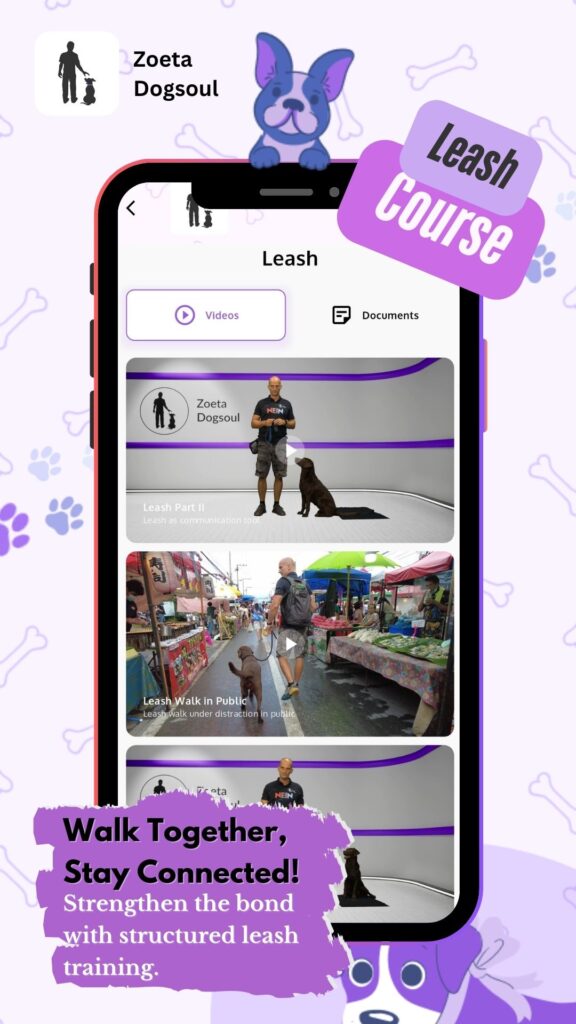
The first few trial separations need to be identical to the training exercises, but instead of leaving the room for a few minutes while your dog is calm and distracted, start leaving the house. The first few separations simply need to be long enough for your dog to leave the house and return with no signs of restlessness or destructiveness. This can take anywhere from a few seconds to a few minutes; the hardest and most important part is just getting out the door without your dog panicking. Increase the time slowly but steadily. Your dog must always be relaxed at the beginning. Separations need to be as similar as possible and include other tasks related to separation, such as opening and closing the car and truck door and returning, turning the car engine on and off and returning, or pulling the car and truck out of the driveway and returning. The goal is for your dog to learn that separations are short and that you return quickly.
Therefore, you may increase the time you are gone only if the dog remains reined in when you leave. Increasing the time should be done arbitrarily and gradually. You can’t go from a 5-minute separation to a 30-minute separation right away, or your dog might get nervous.
How come my dog gets so nervous when I leave the house, but is completely calm when I get out of the car?
Some dogs that destroy the house when released will stay in a car or van without becoming anxious or dangerous. This could be because your dog has learned to relax and enjoy car rides without constant physical contact. When you leave the car, the ride may be quite short. After that, you can regularly leave the dog in the car during longer absences. This is evidence that your dog can learn to relax when he is used to being neglected, when he has a place where he feels cared for, and when he gradually gets used to separations. This is similar to the way your dog should be trained to sit back in your house and also slowly accept much longer separations.
” Retraining program that is necessary.
To help your dog gain some independence.
And also to accept time away from you.”
Although medication can be very important in minimizing the underlying anxiety and helping your dog cope, it is the retraining program that is necessary to help your dog gain some independence and also accept time away from you. Pheromone therapy can likewise be used to reduce anxiety, both when you are at home as well as when you are away. Just recently, brand-new medications have been approved to treat separation anxiety in dogs. Contact your veterinarian to see if a medication is appropriate for your dog.
Get your Dog Boarding in Chiang Mai, Dog Training in Chiang Mai & Dog Training in Bangkok today.
